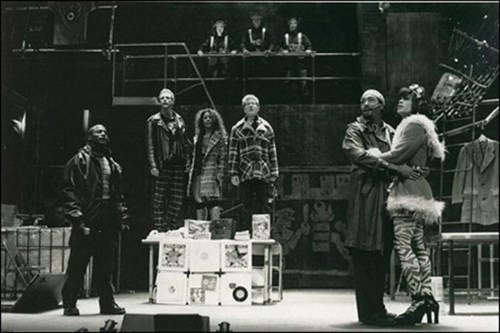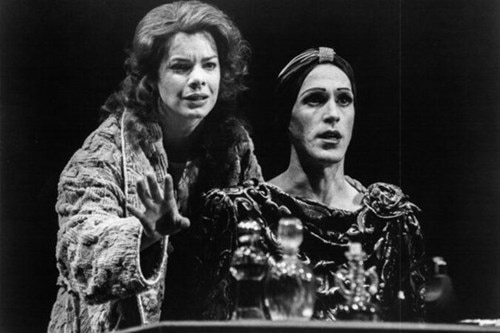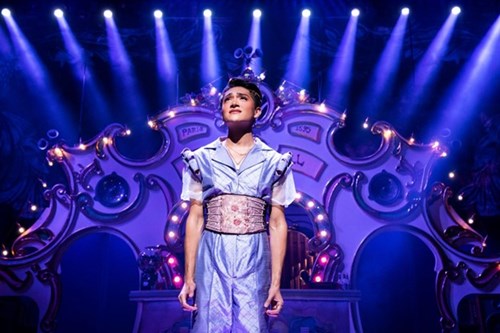
As the curtain lifts, the history of Broadway unveils a colorful tapestry woven with diverse threads that tell tales of love, heartbreak, triumph, and resilience. Notably, one thread that has always been central to this rich tapestry is Broadway's deep-rooted relationship with the LGBTQ+ community. A symbiotic bond that has stood the test of time, the nexus between the LGBTQ+ community and Broadway has been instrumental in shaping the cultural landscape in the U.S..
For the LGBTQ+ community, Broadway has served as a platform for representation, a safe haven for expression, and a catalyst for change. Additionally, the LGBTQ+ community has contributed significantly to the creative energy of Broadway, influencing its evolution and propelling it to the forefront of cultural discourse.
The representation of LGBTQ+ characters dates back to the early 20th century. While the presence of these characters served to acknowledge the existence of the LGBTQ+ community, the portrayal was not always nuanced or progressive. Early depictions often leaned heavily into stereotypes, with LGBTQ+ characters typically typecast as tragic figures or sources of comic relief.
The 1920s and 30s saw the emergence of plays like The Drag and The Captive, which began to explore themes of homosexuality. However, these plays often ended in tragedy for their LGBTQ+ characters, reinforcing the notion that those who deviated from the heterosexual norm were destined for sorrow. Broadway’s relationship with the LGBTQ+ community was in its infancy, and while these early representations were flawed, they were important first steps in bringing visibility to a community that had previously been kept in the shadows. These early plays set an important precedent, sparking conversations and paving the way for more nuanced and diverse portrayals in the future.
The mid-20th century ushered in a new era of increased LGBTQ+ representation on Broadway, with the post-war period and the cultural revolution of the 1960s playing a pivotal role. This period saw the advent of plays that dared to challenge the status quo, breaking barriers and pushing the boundaries of what was considered acceptable on the Broadway stage.
Plays like The Boys in the Band, a groundbreaking piece that offered an unfiltered glimpse into the lives of gay men, set the stage alight in 1968. This was followed by Torch Song Trilogy in the 80s and Angels in America in the 90s - plays that portrayed the LGBTQ+ experience with an authenticity and depth previously unseen on Broadway.

The Stonewall Riots of 1969, a galvanizing event for the LGBTQ+ rights movement, had a profound impact on Broadway. This pivotal moment in history marked a shift in the narrative, setting the stage for a more inclusive and representative Broadway.
Broadway’s role in the LGBTQ+ community’s struggles extends beyond the portrayals of the community on stage. It has also served as a powerful platform for activism, using its influence to challenge societal norms and advocate for LGBTQ+ rights. Plays such as The Normal Heart, Falsettos, and Rent tackled difficult issues head-on, providing a raw, unvarnished look at the AIDS crisis and its devastating impact on the LGBTQ+ community. These plays not only raised awareness but also humanized the crisis, fostering empathy and understanding among audiences.
By presenting LGBTQ+ characters and stories in a relatable and empathetic manner, Broadway has played a key role in shifting societal attitudes toward acceptance and understanding. This cultural shift has, in turn, fed back into Broadway, creating a positive feedback loop of representation and acceptance.
As Broadway's relationship with the LGBTQ+ community matured, so too did the narratives it brought to the stage. The stereotypical roles of yesteryears gave way to complex, nuanced characters that reflected the diversity of the LGBTQ+ experience. This transformation was not just a victory for representation but also a testament to the evolution of storytelling on Broadway.
Plays like Fun Home, a poignant exploration of a lesbian woman's relationship with her gay father, and Kinky Boots, a celebration of individuality and acceptance, brought transformative narratives to the stage. These plays challenged audiences to confront their preconceived notions, bringing a new depth of understanding to the LGBTQ+ experience. The evolution of LGBTQ+ narratives on Broadway is a reflection of the broader cultural shift toward inclusivity and acceptance, a change that continues to shape the industry today.
The transformative narratives on Broadway would be incomplete without the mention of iconic performances by LGBTQ+ actors that have left an indelible mark on the industry. These performances have not only showcased the immense talent within the LGBTQ+ community but also paved the way for increased visibility and acceptance.
Ariana DeBose's electrifying performance in Hamilton earned her international acclaim, and she went on to make history as the first queer woman of color to win an Academy Award for her role in the film adaptation of the West Side Story. Ben Platt, openly gay since his teens, delivered a heart-wrenching, award winning performance in Dear Evan Hansen, bringing to life a complex character grappling with mental health issues with sensitivity and depth. Meanwhile, J Harrison Ghee, a nonbinary actor, has been breaking barriers with their powerful depiction of Daphne in Some Like It Hot. Their performance has been hailed for its authenticity and energy, challenging gender norms and advocating for acceptance. These iconic LGBTQ+ performances not only highlight the immense talent within the community, but they also serve to inspire and normalize diversity on the big stage.
In the current era, Broadway's relationship with the LGBTQ+ community continues to evolve, reflecting the strides made toward LGBTQ+ representation and inclusivity. Several recent productions underscore this progress, showcasing LGBTQ+ narratives with a depth and complexity that was unimaginable in earlier times.

& Juliet, a reimagining of Romeo and Juliet, explores themes of love and identity through a queer lens of May, a non-binary character played by non-binary actor Justin David Sullivan. Kimberly Akimbo, on the other hand, features multiple queer side characters. Lempicka, a new musical about the life of artist Tamara de Lempicka, doesn’t shy away from her bisexuality, while the revival of Cabaret at the Kit Kat Club continues to confront audiences with its unflinching depiction of queer life during the Weimar Republic.
These productions demonstrate the breadth and diversity of LGBTQ+ stories on Broadway today. They serve as a reminder of how far we've come, while also highlighting the work that still needs to be done. Continued representation, coupled with a commitment to telling diverse and authentic stories, will ensure that Broadway remains a champion of the LGBTQ+ community, mirroring its triumphs, struggles, and resilience on the stage.
It's clear that the relationship between Broadway and the LGBTQ+ community is a deeply intertwined one. The LGBTQ+ community has left an indelible mark on Broadway, shaping its narratives and helping it evolve into a platform that celebrates diversity and promotes inclusivity.
As we look toward the future, join us in celebrating the rich tapestry of LGBTQ+ narratives on Broadway. Whether it's a thought-provoking play like Lempicka, a heartwarming musical like & Juliet, or a powerful revival like Cabaret at the Kit Kat Club, there's no better time to immerse yourself in the transformative world of Broadway.
Broadway Inbound is your key to unlock the door to an inclusive, diverse, and ever-evolving world of Broadway. Witness the powerful performances, appreciate the rich representation, and celebrate the enduring legacy of the LGBTQ+ community on the Broadway stage. Join us today at Broadway Inbound and be a part of the colorful tapestry that is Broadway.